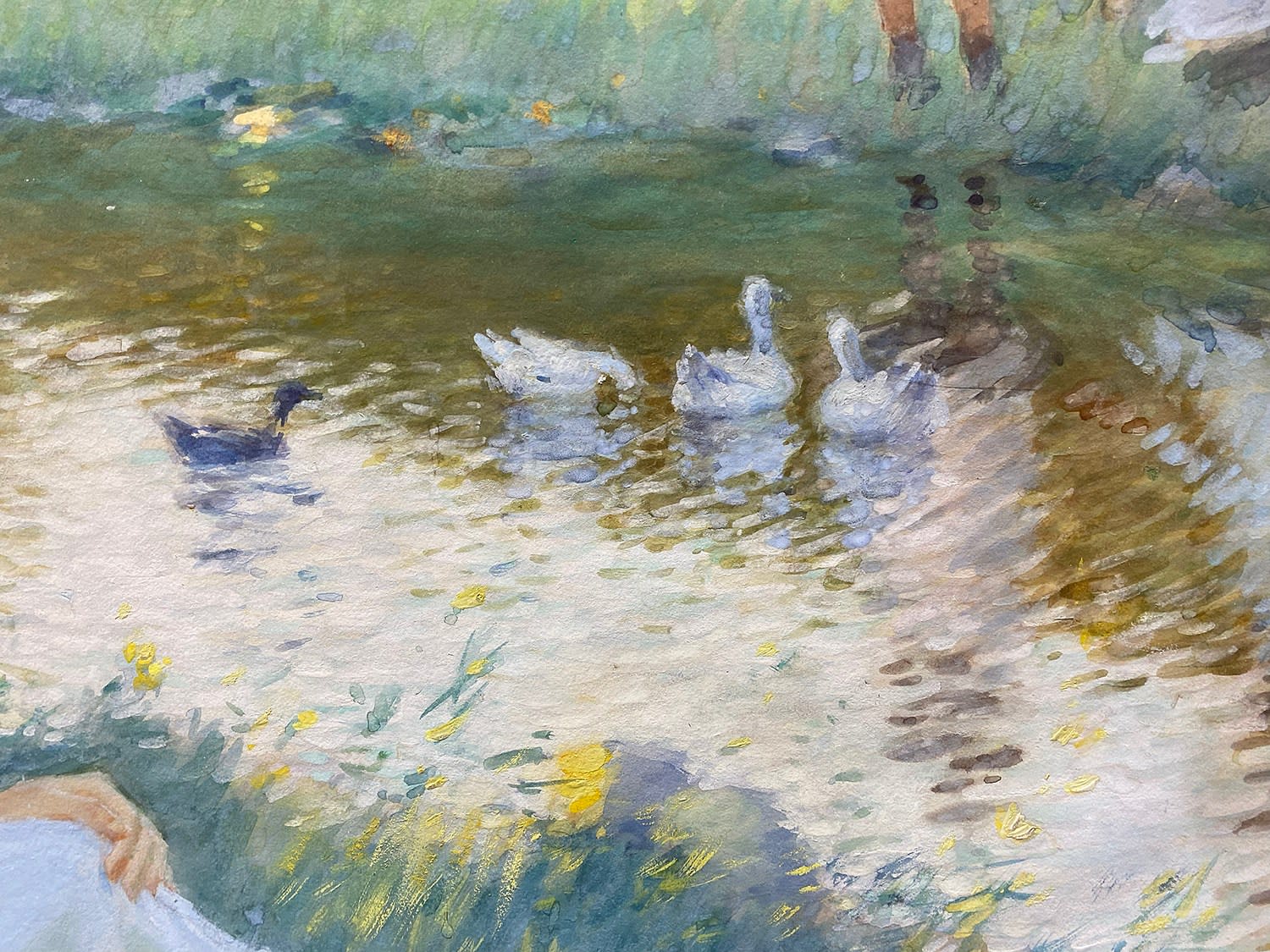artist
Edward Dufner (1872–1957) was a notable American painter whose career spanned significant stylistic transitions, reflecting both personal evolution and broader artistic trends. Initially, Dufner was influenced by the moody, tonal aesthetic of James McNeill Whistler, with his early works demonstrating the darker palette and subtle atmospheric effects characteristic of Whistler's style. However, after settling in Caldwell, New Jersey, around 1909, Dufner underwent a dramatic shift in both technique and subject matter. Embracing the light-filled, vibrant qualities of Impressionism, he began to focus on capturing the effects of natural light and the vivid colors of the landscape.
This transformation marked the beginning of Dufner's prominence as one of New Jersey's leading Impressionist painters. Throughout the remainder of his career, his work became increasingly infused with the principles of the French Impressionists, particularly in his use of broken color, loose brushwork, and an emphasis on atmospheric conditions. Dufner’s paintings often depicted scenes of rural New Jersey, including landscapes, gardens, and domestic interiors, all imbued with the bright, shimmering light of his new style.
Dufner's commitment to the Impressionist movement earned him recognition both locally and nationally. He exhibited at important venues such as the Pennsylvania Academy of the Fine Arts and the Art Institute of Chicago, and his work was praised for its fresh approach to capturing light and mood. By the time of his death in 1957, Dufner had firmly established himself as a key figure in the American Impressionist tradition, particularly in the context of New Jersey’s artistic community.
provenance
American Art Association, New York, 3 May 1917, lot 161 (consigned by the artist on behalf of the Allied War Relief)
Abraham & Straus, Brooklyn, New York (acquired at the above sale)
Spanierman Gallery, New York
Hirschl & Adler Galleries, Inc., New York
Marvin Sadik Fine Arts, Scarborough, Maine
Private collection, acquired from the above until 2024
Sotheby's NY March 2024
exhibitions
Santa Fe, New Mexico, Santa Fe East Gallery, An Exhibition of Paintings by American Impressionist Painters, July - August 1982
New York, Grand Central Art Galleries, La Femme: The Influence of Whistler and Japanese Print Masters on American Art 1880-1917, October - December 1983, no. 47, pp. 71 and 117, illustrated in color






















